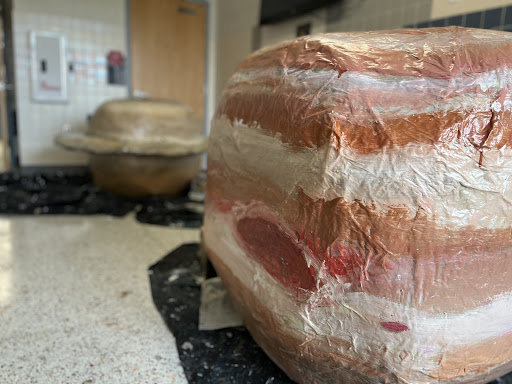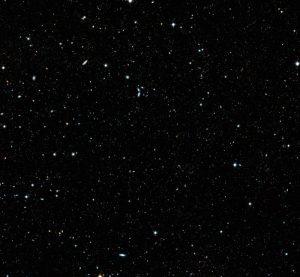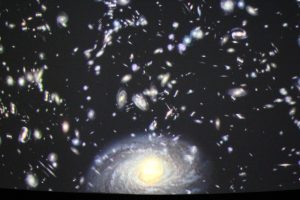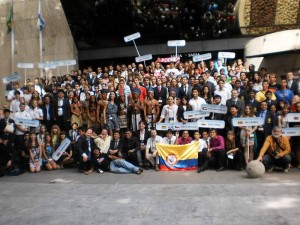FCPS Solar System Project: Launching off to Expand Astronomy Education

The students placed Jupiter and Saturn outside the planetarium for others to look at as they walked by.
May 9, 2022
Students walking past the planetarium of Jefferson noticed the painted “planets” which are a part of the Fairfax County Solar System Project managed by Rachel Kwon, Ryan Lien, and Max Vetter.
The FCPS Solar System Project was designed to create a model of the solar system to scale with the sun being represented by the gym. The title of the project includes “FCPS” because some of the planets are installed in elementary schools.
“We have to work with the FCPS State House Administration Center [and] the FCPS Park Authority to get our planets installed,” Senior Ryan Lien said. “Our main objective is to show that astronomy education can reach out beyond the walls of the school.”
Lien also mentioned that the project was actually started last year, when the idea was created with that same goal in mind. This year, the students set out to move forward with the plan of expanding astronomy education.
“The majority of our project was just building the planets using PVC pipes, a lot of coding, a lot of talking to the George Mason planetarium and FCPS themselves,” Lien said. Another part is trying to figure out how we’re going to make this a research project by surveying and [deciding] what we do with the data we get and how to see if it’s effective or not.”
After going through this long process and talking to people who run on a tight schedule, the project turned out to be rather successful by capturing the interests of students. Despite this, the members hope to pull in more young children and create a stable foundation for the project to thrive even more in the future.
“I see a lot of people looking at the Mercury at the tennis court or visiting some of the planets to post them on their instagram, so I would say it’s been effective so far. I would hope that in the future we get more elementary schools involved, but another thing with the project is that it’s a lot of laying the groundwork like building planets even if they’re not going to be installed this year,” Lien said.
So far, all the rocky planets have been installed; Mercury, Venus, and Earth are out in the wild and Mars, Jupiter, and Saturn are in the planetarium. Both Lien and his partner Senior Rachel Kwon strongly feel that interest in astronomy is what inspired them to take on this project, and it is also the most important component to have when deciding whether or not to do something astronomy related.
“I had no prior experience with astronomy, but I just did it because I was interested and I would say the same to other students who want to do something like this in the future,” Kwon said.








